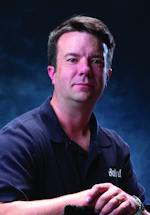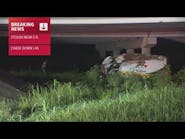The most common request I receive from around the world is assistance with thermal imager training. There is a shortage of reliable, unbiased training material on the market and, like it or not, thermal imagers are technical pieces of equipment that require training for effective use. That training can come in one of several forms, including full, formal classes to informal online research.
Usually, firefighters contact me looking for in-depth advice or information so they can develop their own full-fledged training curriculum. While this is a noble pursuit, which I wholeheartedly support, underlying the request is the belief that training must be complicated, technical and lengthy for it to be valuable — this is simply not true. In fact, shorter, hands-on training that reinforces something firefighters already know, or points out something they do not yet know, can be incredibly effective and can "open the door" to a more technical explanation or greater understanding of the technology. Each of these quick drills can be conducted daily and in less than 15 minutes.
• Identifying "heat signatures" — Heat signatures can take on many different forms from the in-your-face obvious to the more subtle indicators. Most firefighters think of "big heat" when they think about firefighting or thermal imaging and then fail to notice less-obvious heat signatures; however, there is much to be learned from the smaller heat sources.
Somewhere in the fire station, place a space heater on the other side of a closed door. A solid-core door will work best, but any door will do. Give the door some time to warm up. The door should develop a V-shaped "heat signature" on it. You may have to play with the temperature setting on the space heater or even boost the space heater up by placing it on a non-combustible item to get the look right. Have the firefighters conduct a search and see if they recognize the heat pattern prior to opening the door. Whether they notice it or not, you can use the opportunity to talk about the benefit of recognizing smaller heat sources. If you have both solid-core and hollow-core doors in your station, you can set up several space heaters to show the difference between these different door construction types.
• The effects of reflections — Reflections can create confusion and disrupt otherwise well-laid plans. While you cannot plan for every possible scenario, creating awareness is at least a step in the right direction. Fill the shiniest pot you can find with water and place it on a stove burner with the burner on high. Grab a cast-iron skillet and place it on a burner immediately next to the shiny pot and turn that burner on high as well. Wait for the water to boil and the skillet to get hot. You are now ready to go.
Everyone knows that water boils at 212 degrees Fahrenheit; however, when you use temperature sensing and point the crosshairs at the side of the pot, the temperature will read well below that. This is because of the reflectance of the outside of the pot. The thermal imager is reading the reflected temperature of the room rather than the temperature of the pot. Now look at the reflection of the skillet on the side of the pot. You should be able to see the colorization (if your imager is so equipped) or the extreme white of the skillet in the pot. If you place the crosshairs on the shiny pot where you see the reflection of the skillet, the imager will read the temperature of the skillet in the reflection from the pot.
• Thermal latency — Ask several firefighters to sit or lie down on furniture and assume different positions. Let them stay there for several minutes and then tell them to get up. What you will see is the amount of body heat that the furniture absorbed and is now re-emitting. This latent thermal effect can be used to show that a firefighter, during search and rescue, may see "signs" of victims before locating any. There may be latent thermal images on furniture or beds, which can be indications that victims are present. This can also be used on car accidents to assist in determining the number of occupants, especially in rollover accidents where ejections are more common.
• Insulation — Grab a chemical hot pack, activate it and throw it on a table. Show the group what the hot pack looks like to the thermal imager, and then cover it with a thick blanket. This shows that victims on beds are hard to detect as the warmer the blanket is for people, the better insulator it is. The better insulator the blanket is, the harder it is for a thermal imager to "see." For this reason, all beds should be searched by a gloved hand regardless of what the thermal imager says.
• Fire inspections and pre-plans — One of the easiest trainings to conduct is to simply take the thermal imager with you during company-level fire inspections or pre-plans. Use the thermal imager to look around the building and if you see something that you do not recognize, investigate it until you understand what is causing it and why it appeared the way it did on the thermal imager. Building this kind of mental database is one of the most effective methods of understanding what the imager is trying to display.
Again, training does not need to be complicated to be effective. While I strongly recommend that every fire department seek some type of structured, qualified and detailed thermal imaging instruction, that does not mean that you can't cover some basic principles with minimal time and effort.
BRAD HARVEY is the Thermal Imaging Product Manager at Bullard. He is a veteran of public safety as a firefighter, police officer and paramedic and is certified through the Law Enforcement Thermographers' Association (LETA) as a thermal imaging instructor. Harvey has worked as a high-angle rescue instructor and is a certified rescue technician and fire instructor. If you have questions about thermal imaging, you may e-mail him at [email protected].

Brad Harvey
BRAD HARVEY is the Thermal Imaging Product Manager at Bullard. He is a veteran of public safety as a firefighter, police officer and paramedic and is certified through the Law Enforcement Thermographers’ Association (LETA) as a thermal imaging instructor. Harvey has worked as a high-angle rescue instructor and is a certified rescue technician and fire instructor. If you have questions about thermal imaging, you may e-mail him at [email protected].





